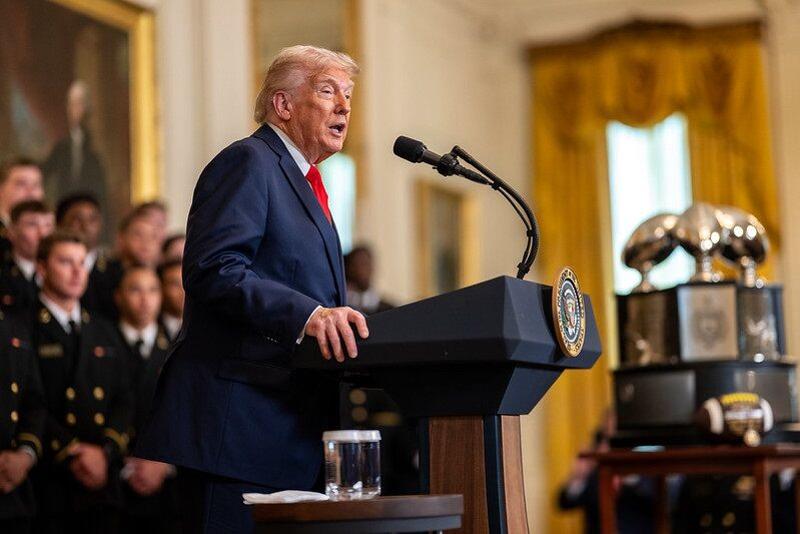President Donald Trump has so far kept a 10% baseline tariff in place even as he looks to make trade deals with the foreign nations, including longtime allies such as the United Kingdom.
When Trump’s trade team announced a deal with the UK last week, the 10% baseline tariff remained in place. The special relationship between the two countries didn’t change Trump’s view. Trump also wasn’t swayed by relatively balanced trade relationship between the two nations. U.S. total trade with the UK was an estimated $148 billion in 2024, according to the White House.
“You are always going to have a baseline, there could be an exception at some point, we’ll see, you know, somebody does something exceptional for us, it’s always possible,” the president said. “But basically, you have a baseline, of a minimum of 10%, and some of them will be much higher.”
The White House further noted that “the UK maintains certain tariff and non-tariff barriers that restrict market access and create an unfair playing field for American workers and businesses.” It pointed to UK tariffs that can exceed 125% on meat, poultry, and dairy products and different food safety standards. The UK is America’s ninth largest trading partner.
Trump’s 10% baseline tariff also remains in place for China after weekend talks that resulted in both nation’s significantly lowering tariffs on imports from each other.
The U.S. will reduce its tariffs on China from 145% to 30% – that 10% baseline plus an additional 20% related to China’s alleged role in the production of chemicals used to make fentanyl – while the two nations continue to talk. China will cut its levies on U.S. imports from 125% to 10%, according to a joint statement from the two nations.
The U.S. goods trade deficit with China was $295.4 billion in 2024, the largest with any trading partner, according to the White House.
Trump announced a slate of higher tariffs on April 2 but suspended them seven days later. Trump said the 90-day pause was designed to give his trade team time to make deals with foreign countries to reduce the U.S. trade deficit. Trump kept a 10% baseline tariff on foreign imports and a 25% tariff on foreign-made passenger vehicles and auto parts. As part of the UK deal, Trump lowered the tariffs on the first 100,000 UK auto imports to 10%. Imports after that will pay the full rate of 25%, according to the White House.
U.S. Treasury Secretary Scott Bessent noted that tariffs could provide both long-term revenue streams and act as a tool for free trade.
“I think it is a combination of both. We’re going to take in long-term tariff revenue. We put a process in place. We have 18 important trading relationships, we will be speaking to all of those partners or at least 17 of them over the next few weeks. Many of them have already come to Washington,” Bessent said recently. “What President Trump is referring to is the ability for tariff revenue to give income tax relief, and I think there’s a very good chance we will see this in the upcoming tax bill. The president campaigned on no tax on tips, no tax on Social Security, no tax on overtime and the restoring interest deductibility for American-made autos. Tariff income could be used for tax relief on all those immediately.”
Economists, businesses and many publicly traded companies have warned that tariffs could raise prices on a wide range of consumer products.
Trump has said he wants to use tariffs to restore manufacturing jobs lost to lower-wage countries in decades past, shift the tax burden away from U.S. families, and pay down the national debt.
A tariff is a tax on imported goods. The importer pays the tax and can either absorb the loss or pass the cost on to consumers through higher prices.






